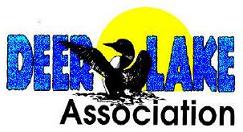

Deer Lake Association
A member of the Minnesota Lakes Association
| Spotlight |
|---|
|
|
2007 Algae Bloom:
Deer Lake underwent one of the most significant algae blooms in it’s history.
Dr. Jack Jones, Limnologist, commented that the bloom may be due to the drought the area has suffered followed by runoff of heavy rain causing nutrient loading.
MN Pollution Control Agency states, “An algae bloom may turn the water to a neon green, blue-green, or reddish-brown pea soup; may cause a bad smell and taste in the water; and may form a foam or scum on the water's surface. The algae may periodically use up oxygen in the water, killing fish.”
The Minnesota Department of Health recommends that humans not ingest, swim or wade in water near an algae bloom, or let children or pets enter it. If contact does occur the material should be washed off thoroughly, paying special attention to the swimsuit area. If your pet comes in contact with a bloom, wash off your pet's coat to prevent the pet from ingesting the algae while self-cleaning. If you suspect the animal is sick from the algae, call a veterinarian immediately.
*To maintain or improve the water quality of Deer Lake a shoreland buffer is recommended. A shoreline buffer of natural vegetation traps, filters, and impedes rainwater runoff and septic seepage. Creating a “no mow zone” by the shoreline will allow native plants and flowers to flourish. The DNR says a 50’ vegetative buffer has been proven to reduce nutrient load to lakes by 60%.